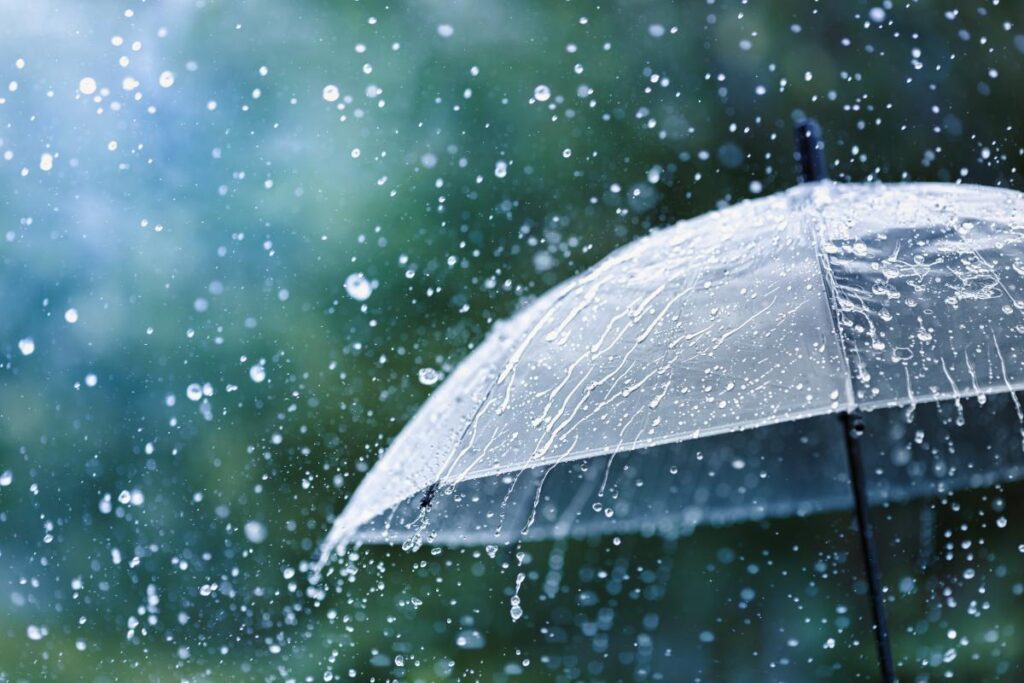Weather shapes how we feel, interact, and manage daily life—sometimes in subtle ways, other times profoundly. On a bright, sunny day, your mood and energy might lift. During gray, cold stretches, you may feel less motivated or even down. For individuals affected by substance use challenges, shifts in weather and season can make things even more complex. The link between weather and addiction is more than coincidence—it’s a factor that can influence vulnerability to substance misuse. Understanding these connections gives you the knowledge and hope you need to care for yourself or others who are struggling.
If you or someone you love needs support, our caring team at Promises Brazos Valley is here for you. Our residential and outpatient addiction treatment programs are designed to nurture healing at every stage of recovery. We’re committed to guiding you on a healthier path and helping you stay connected through our Rooted alumni program, which offers weekly online and in-person groups. Feel free to reach out today and discover how we can help.
Weather impact on addiction: Understanding seasonal risk factors
Weather’s impact on addiction can be seen in how specific patterns or events influence mental health, stress levels, and social behavior. Research continues to reveal just how much weather impacts addiction and shapes the need for treatment and support. Being aware of these triggers—and how shifting temperatures and conditions can make staying sober harder—can make a world of difference.
The challenges of winter: Seasonal affective disorder (SAD) and substance use
One of the best-known examples of weather impact on addiction risk is seasonal affective disorder, a form of depression closely tied to the winter months. When daylight dwindles and temperatures drop, many people report low mood, fatigue, apathy, and social withdrawal—a constellation of symptoms that can challenge even the most resilient individuals.
Symptoms of winter SAD often include:
- Persistent fatigue
- Low or irritable mood
- Changes in appetite (often eating more carbohydrates)
- Restless or excessive sleep
- Social isolation
Some individuals may turn to alcohol, sedatives, or other substances to “lift” their mood or numb themselves to emotional discomfort. While these coping strategies might provide short-term relief, they can ultimately worsen depression and increase the risk of developing substance use disorders.
Summer onset SAD: When sunshine brings unexpected struggles
Though many connect SAD with winter, some people struggle similarly as temperatures climb. Summer-onset seasonal affective disorder is less common but just as real. High heat, increased sunlight, and long days may bring on agitation, poor sleep, changes in eating habits, or heightened anxiety. Social media may amplify the fear of missing out (FOMO), especially if it feels like everyone else is enjoying summer festivities. Self-consciousness about appearance can also intensify in warm-weather months, leading to additional stress.
Symptoms often reported during summer-onset SAD include:
- Restlessness and difficulty sleeping
- Decreased appetite or weight loss
- Anxiety and racing thoughts
- Feeling overwhelmed by heat or social expectations
In some cases, these symptoms can push individuals toward unhealthy coping mechanisms—including increased substance use. Recognizing these patterns is the first step to breaking them.
Addiction treatment and climate: The broader context
Beyond seasonal affective disorder, addiction treatment and climate are closely linked in many other ways. Shifting weather patterns, whether brief storms or long-term climate change, can alter availability of social support, disrupt routines, and even change access to recovery resources.
For example:
- Extreme temperatures: Both heat waves and cold snaps can limit outdoor activity, social interaction, and exercise. Isolation during these times can raise the risk of relapse or increased substance use.
- Natural disasters: Events like hurricanes, flooding, or wildfires can displace individuals from their homes, cut off access to support groups, and cause immense stress—triggering or worsening addiction in vulnerable people.
- Changing social patterns: Longer daylight during warmer months can increase opportunities for parties, celebrations, and casual drinking, sometimes catalyzing problematic behavior.
Providers and families must be prepared to adapt addiction treatment and climate response plans to these changes. Flexibility and access to telehealth, virtual groups, and proactive plans for bad weather are increasingly important.
Recognizing the effects of weather on recovery
Understanding the effects of weather on recovery is essential for well-being—both for those in treatment and long-term sobriety. Our bodies and minds respond to environmental changes in ways that support or challenge our healthy habits.
Some key ways weather can affect the recovery journey:
- Physical well-being: High temperatures can cause dehydration and exhaustion, and cold can worsen loneliness. Both extremes can affect motivation and decision-making.
- Mood and triggers: Certain times of the year, like winter holidays or the height of summer social events, may bring back memories, cravings, or old routines associated with substance use.
- Social support: Weather events that disrupt daily life, such as hurricanes, winter storms, or flooding, may reduce access to in-person support groups or therapy.
- Treatment participation: Inclement weather can impact transportation to in-person appointments. Maintaining access to virtual counseling and group support can help bridge these gaps.
Proactively planning for these seasonal and climate-related challenges increases your resilience and decreases setbacks on the path to recovery.
Building resilience: Steps for navigating weather and addiction risk
Everyone’s experience with weather and addiction is unique, but there are proactive steps you can take to protect your recovery journey regardless of the season.
- Monitor your mood: Track how changes in weather or daylight hours affect your motivation, cravings, or energy. Share these patterns with your support system or provider.
- Stay connected: Make an extra effort to reach out to peers, loved ones, or treatment providers when bad weather or season changes threaten your routine.
- Plan indoor and outdoor activities: If the weather is limiting, brainstorm new routines, hobbies, or movement you can do at home.
- Hydrate and nourish: Maintain healthy eating and hydration habits, especially during heat waves or cold snaps.
- Prioritize sleep and rest: Disrupted sleep is a risk factor for poor mood and cravings. Consider light therapy in dark winter months or cooling routines when temperatures rise.
- Access care remotely: Ask your provider about telehealth, online therapy, or virtual support groups when in-person meetings aren’t possible due to climate or weather.
These strategies help you take ownership of your recovery, regardless of what’s happening outside your window.
No matter the climate or season, compassionate care can make overcoming substance use possible. At Promises Brazos Valley, we believe healing happens when you feel understood and supported in every aspect of your life—including nature’s challenges. Our team provides holistic, evidence-based care and ongoing support through all the elements. If you’re ready to find renewed hope in every season, connect with our team today.
Frequently asked questions (FAQs) about weather and addiction
How does weather affect addiction and recovery processes?
Weather changes can influence physical and mental health. For example, shorter, darker winter days may trigger depressive symptoms that increase the risk of substance use as a way to cope. Hot, stressful summers can lead to increased anxiety and disrupted routines, which are difficult for people in recovery. Planning for these fluctuations and having a strong support system are crucial in overcoming these challenges.
What are the psychological impacts of weather changes on individuals with addiction?
Fluctuating weather can cause mood changes, increase feelings of isolation, and sometimes lead to anxiety or depression. Individuals living with addiction may be susceptible to these shifts, making cravings more intense or increasing the urge to self-medicate during complicated weather patterns.
In what ways can seasonal changes influence addiction relapse rates?
Seasonal transitions into winter or major holidays can increase stress and make people more vulnerable to relapse. Additionally, social events during warmer months can offer frequent opportunities for substance use. Recognizing these seasonal triggers is vital for building a strong relapse prevention plan with your provider.
How can understanding weather patterns aid in addiction treatment strategies?
Knowledge of seasonal and weather-related triggers allows care teams to personalize treatment plans. This can include offering extra support during high-risk times, scheduling regular check-ins, and encouraging patients to engage in activities tailored to various weather conditions, indoors or outdoors.
What role does climate play in the recovery journey from addiction?
Climate can affect access to care, willingness to attend treatment, and mental health overall. In extreme weather or natural disasters, telehealth and online support groups have become vital to maintaining contact with counselors and peer support. A flexible and informed approach helps promote sustained recovery, regardless of external conditions.
Connect with Promises Brazos Valley and get the help needed to support your recovery
Your health and recovery don’t have to depend on the weather. If you’re facing challenges or see patterns in your substance use that you want to change, Promises Brazos Valley is here to help with compassionate care and tailored support, rain or shine. We offer personalized treatment plans, skilled professionals, and post-treatment options like our Rooted alumni program—helping you feel secure, connected, and hopeful at every stage.
Reach out online or call 888.483.7851 today. Embrace a new season of healing and possibilities with dedicated care that lasts—no matter what the weather brings.

